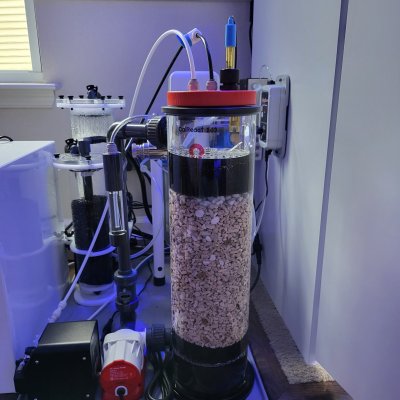Wanting to purchase a calcium reactor for my 250g reef tank. Seems there is a lot of information to wrap my head around to make a good informed decision, and I feel somewhat lost in the nuances. Just looking for some advice.
I have stumbled across these automatic calcium reactors, which seem great in theory but the price is high and some users have had trouble getting these things fine tuned enough to stop alarming and behave nicely. Dastaco seems to be the only option of an auto carx at this time since Deltect 1500 is oos.
Standard reactors have a lower price points, but require fiddling with alk output for a bit. Geo seems to very popular, along with Tunze and Korralin. I think Lifereef or Avast could be a good option as well. Is there so little differences between these that it won't matter much which is chosen as they will all give simular results?
Is using a calcium reactor going to lower display tank pH so a CO2 scrubber or stirrer is going to be a necessity?
Also, I have never gotten on board with Apex, is now going to be the time I am forced to get a controller so that I can keep a constant eye on pH?
Is the $1k price difference between auto and standard carx worth it?
Any input is appreciated, thanks
I have stumbled across these automatic calcium reactors, which seem great in theory but the price is high and some users have had trouble getting these things fine tuned enough to stop alarming and behave nicely. Dastaco seems to be the only option of an auto carx at this time since Deltect 1500 is oos.
Standard reactors have a lower price points, but require fiddling with alk output for a bit. Geo seems to very popular, along with Tunze and Korralin. I think Lifereef or Avast could be a good option as well. Is there so little differences between these that it won't matter much which is chosen as they will all give simular results?
Is using a calcium reactor going to lower display tank pH so a CO2 scrubber or stirrer is going to be a necessity?
Also, I have never gotten on board with Apex, is now going to be the time I am forced to get a controller so that I can keep a constant eye on pH?
Is the $1k price difference between auto and standard carx worth it?
Any input is appreciated, thanks

















